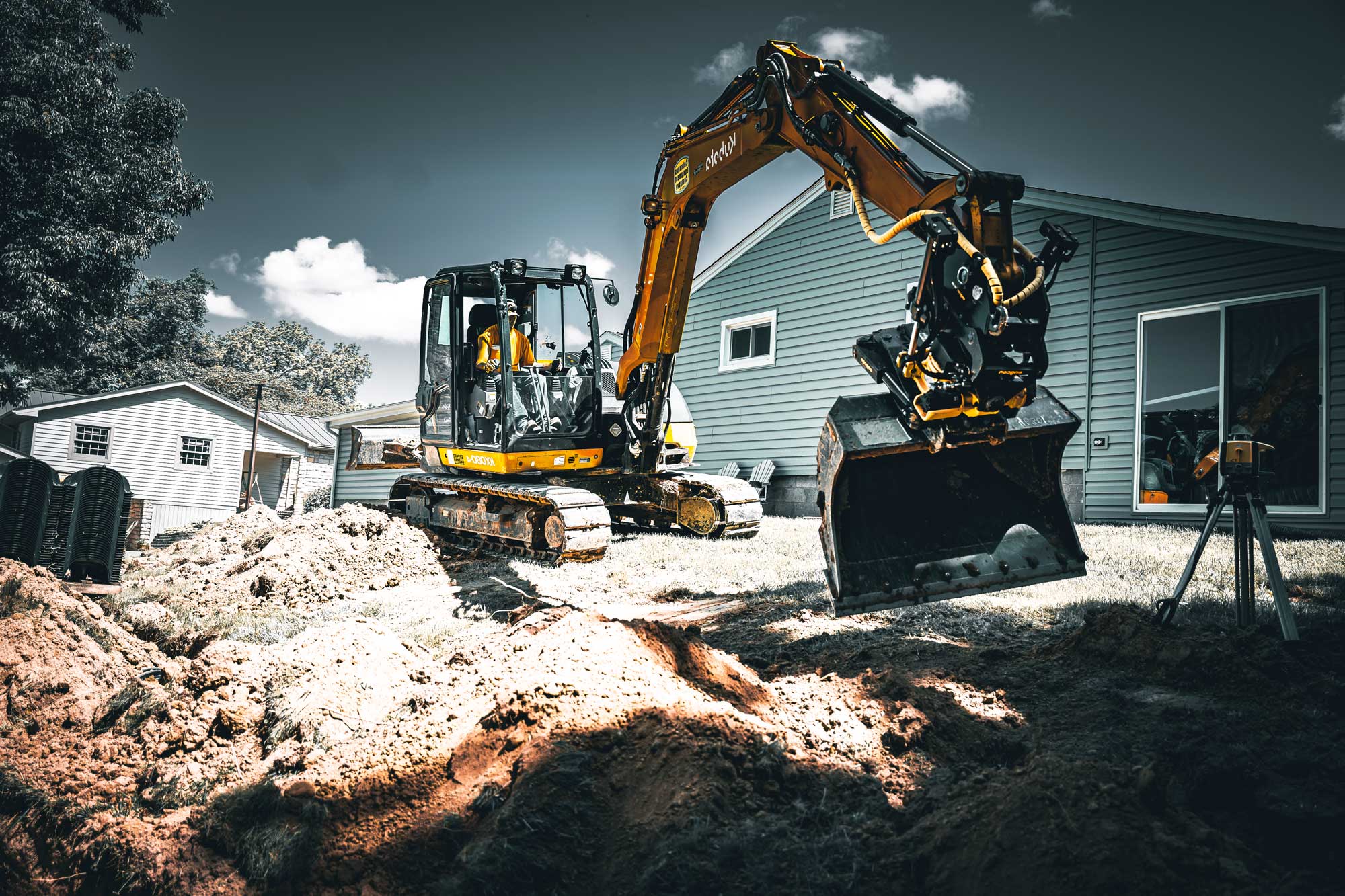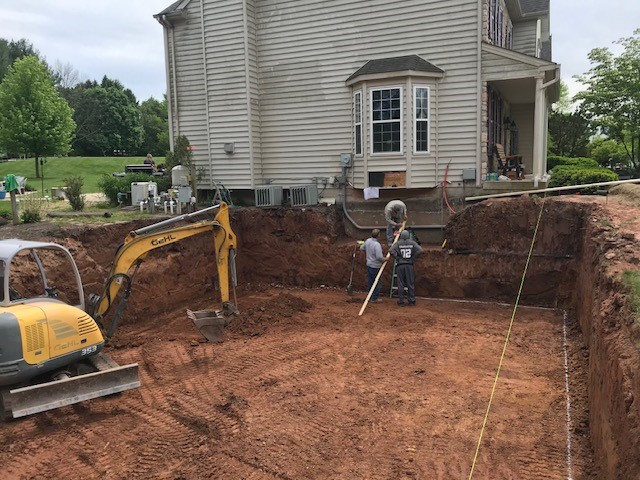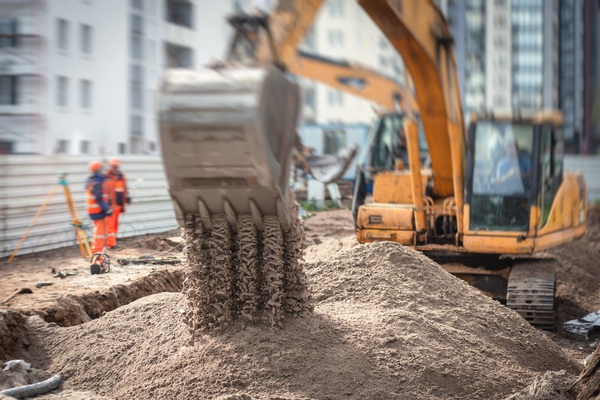Residential Excavating Ohio - Specialized Excavation for Ohio Houses
Residential Excavating Ohio - Specialized Excavation for Ohio Houses
Blog Article
Thorough Exploration: The Scientific Research Behind Superior Excavation Practices
From old hand devices to modern-day hydraulic excavators, the evolution of excavation strategies has actually been a testament to human resourcefulness and technical innovations. What really sets exceptional excavation methods apart is a deep understanding of geological concepts, combined with the use of sophisticated devices and approaches.
Evolution of Excavation Methods
Throughout history, the development of excavation strategies has actually played an important duty in advancing construction techniques and archaeological discoveries. From the primary tools utilized by our forefathers to the innovative equipment employed in modern times, the progression of excavation techniques has actually substantially transformed exactly how we approach various tasks.
In old times, hand-operated labor with basic devices such as shovels, pickaxes, and wheelbarrows was the primary technique of excavation. This labor-intensive process restricted the deepness and scope of excavations, often leading to slow-moving progress and restricted accessibility to specific sites. As civilizations progressed, so did the tools and techniques utilized for excavation.
The Industrial Revolution noted a turning point in excavation exercise with the intro of steam-powered machinery. This technology revolutionized the area, permitting for faster and much more considerable excavations. In modern times, modern technology plays a crucial role in excavation, with improvements like general practitioner systems, drones, and 3D scanning improving accuracy and efficiency in the area. The advancement of excavation methods continues to form the method we construct, check out, and understand the globe around us.
Function of Modern Technology in Excavation

The combination of innovative innovation has actually fundamentally changed the field of excavation, improving precision and performance to extraordinary degrees. One of the crucial technical developments that has significantly impacted excavation techniques is the application of general practitioner systems. These systems permit specific mapping of excavation sites, allowing operators to precisely find underground utilities and structures. Additionally, using telematics in excavation devices has actually allowed real-time tracking of equipment efficiency, causing proactive maintenance and increased operational productivity.
Furthermore, the arrival of 3D modeling and simulation software application has streamlined the planning procedure for excavation tasks. Operators and engineers can currently envision the entire excavation procedure before beginning, recognizing potential challenges and optimizing process. Along with this, the implementation of drones in excavation activities has helped with aerial surveys, volumetric measurements, and site evaluations with unmatched rate and accuracy.
Geological Principles in Excavation
An understanding of geological concepts is essential for ensuring the structural integrity and stability of excavation websites. Geological variables play an essential duty in determining the usefulness and safety and security of excavation projects (septic ohio). One essential geological principle to take into consideration is the type of soil or rock existing at the site. Different dirt types, such as sand, crushed rock, or clay, have differing degrees of stability and call for various excavation methods. For example, cohesive dirts like clay might call for additional assistance to protect against collapses, while sandy soils might be prone to erosion during excavation.
In addition, the geological structure of the area, including faults, fractures, and rock developments, have to be thoroughly assessed to recognize potential risks and challenges. Excavating near geological fault or unpredictable rock developments can result in instability and prospective risks. By carrying out comprehensive geological studies and analysis, excavators and designers can develop strategies to mitigate threats and ensure the successful conclusion of excavation tasks. Inevitably, including geological principles right into excavation practices is essential for attaining secure, efficient, and lasting results.

Newest Devices for Excavation
In the realm of excavation techniques, contemporary developments in tools have changed the effectiveness and accuracy of excavation procedures. Among the most recent tools making waves in the market is the usage of drones outfitted with advanced imaging modern technology. These drones can give detailed aerial studies of excavation websites, providing real-time data on topography and possible dangers. This details aids in much better planning and decision-making during the excavation process.
An additional cutting-edge device obtaining popularity is the execution of 3D printing modern technology for producing custom excavation equipment. This enables the manufacturing of specialized tools that are customized to the details requirements of a project, increasing efficiency and minimizing downtime.
Furthermore, innovations in products scientific research have actually caused the development of more powerful and more sturdy excavation devices. dump truck companies in check out here ohio. Tungsten carbide-tipped excavator add-ons, for instance, offer exceptional performance in tough ground conditions, improving efficiency on-site
Scientific research's Impact on Excavation Practices

In addition, innovations in materials science have caused the development of stronger, much more sturdy excavation devices and equipment. As an example, making use of composite materials in shovels and miners has actually improved their efficiency and long life, eventually enhancing productivity on excavation websites. Additionally, clinical research study on dirt mechanics and geotechnical engineering has supplied useful insights right into dirt habits, allowing excavation specialists to make enlightened choices relating to excavation techniques and dirt stablizing methods. Overall, scientific research proceeds to drive innovation and improvement in excavation practices, making excavation tasks more reliable, cost-effective, and sustainable.

Final Thought
To conclude, the evolution of excavation techniques has actually been greatly affected by advancements in technology and a deeper understanding of geological principles. The latest devices and equipment made use of in excavation have boosted effectiveness and accuracy in the field. The application of scientific knowledge has actually dramatically improved excavation methods, resulting in more effective and sustainable techniques for digging deep into various sorts of products.
In the world of excavation practices, modern advancements in devices have actually revolutionized the effectiveness and accuracy of excavation processes. By leveraging scientific concepts, the excavation sector has visit site actually been able to substantially improve performance, accuracy, and safety in excavation procedures. GPR allows excavation teams to non-invasively check and map subsurface frameworks, energies, and prospective dangers, allowing them to prepare excavation projects with higher accuracy and lowered threat of crashes.
Additionally, scientific research on dirt auto mechanics and geotechnical design has provided valuable insights right into soil behavior, enabling excavation professionals to make enlightened choices regarding excavation methods and soil stabilization techniques. In general, science proceeds to drive innovation and renovation in excavation practices, making excavation projects extra efficient, cost-effective, and lasting.
Report this page